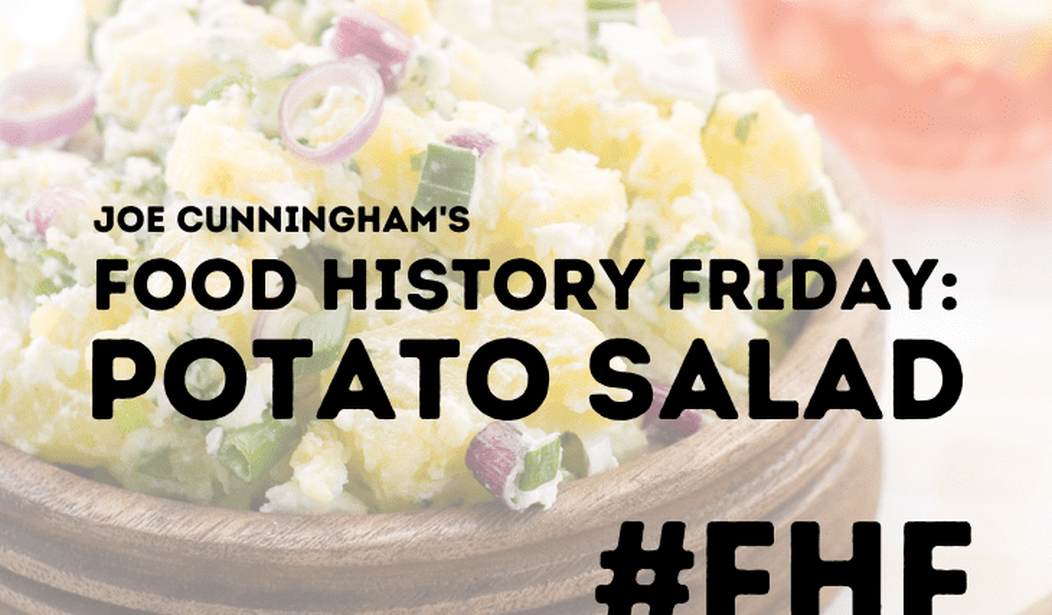It’s almost summer. The weather is getting warmer, and we yearn to be outside. The more primal feelings within us seek out the smoky flavor of food cooked over an open flame. Now that things are returning to normal in society, we are gathering and eating together, and oftentimes that means we’re bringing foods to the cookouts.
As far back as anyone can remember, a few people are usually in charge of some kind of side dish. Chips and dip, baked beans, maybe even some sort of healthy option like a salad. However, there is something that is almost universal at any cookout. You know as soon as someone mentions “barbecue” that there will be a big bowl of potato salad.
It seems almost American in the presentation, right? A starchy mess of potato, little bits of pickle and hard-boiled egg here and there, and some creamy base of mayonnaise and/or mustard. In terms of how we eat it – in big spoonfuls balancing out the weight of the slabs of meat on the other side of the paper plate – it feels American. But, like the Volkswagen, bratwursts, and Albert Einstein, we really just adopted it.
While there are some notes we can find that suggest a type of potato salad came with Spanish explorers to the New World, sometime in the mid-19th century, it seems like German immigrants to America probably brought the culinary base for what would become the American version of the side dish.
In Europe, we know that boiled potatoes, vinegar, and spices made up the dish. When it came to America, it got modified using several of the ingredients we know and love today. It’s also very likely that many of the takes on potato salad that made it distinctly American were inspired by black cooks in the South. As German immigrants came to America in the mid-1800s, there is evidence to suggest they got along well with black slaves and eventually shared the recipe with them. These slaves would take ingredients at hand and use them in the dish.
The German-based version clung tightly to the sour and sweet notes of acid and sugar, with herbs and spices to balance things out. At some point, though, someone decided to add mayonnaise to the dish. This likely happened in the 1920s or 30s, when popular commercial brands like Helmann’s and Miracle Whip became widely available. The introduction of these commercial brands led to a spike in mayo-based salads, and potato salad got an overhaul.
Early 20th century recipes continued to bulk up the dish with textural elements like diced celery, while some recipes feature pickles or pickle relish, which add both a sweetness and a sourness, particularly depending on how much of the pickle brine is called for. The German tradition of adding mustard was kept in some versions of the recipe, and mixing the mustard and mayonnaise together added a creaminess and a tartness that was incredibly well-balanced.
In the decades since, potato salad has become one of those foods that people get almost violently passionate about. There are closely-guarded family recipes, an apprentice-like style of passing down the tradition, and sometimes some folks just get banned from bringing whatever abomination they call potato salad. Some folks like mayo-based potato salad, and some find it abhorrent. Some will switch out the mayo with yogurt or sour cream. Others skip the mustard entirely. I’ve seen recipes with bell peppers and recipes with ranch and cheddar cheese (this works with red potatoes especially well).
There are many correct ways to do potato salad, but there are also some really bad ways to do them. For instance, don’t buy the pre-made stuff at a chain grocery store. Get the ingredients and make it yourself. Also, among the Cajuns where I live, they have discovered that a scoop of potato salad in their gumbo provides a great texture and temperature contrast. Whoever discovered this was a genius, and I thank them from the bottom of my heart.
What’s your go-to potato salad recipe? I admit that I don’t have one (yet), so I might end up borrowing yours.














Join the conversation as a VIP Member